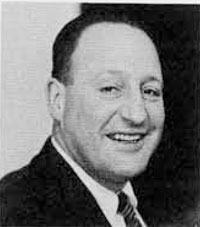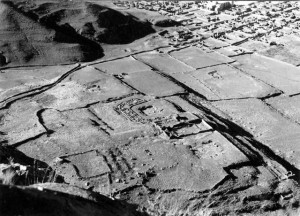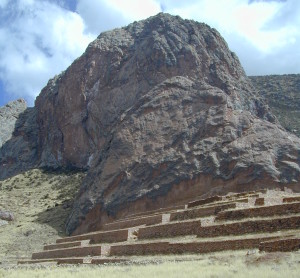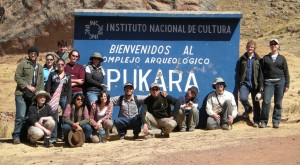Although Spanish chroniclers such as Piedro Cieza de León mentioned visiting the town of Pucará and noted the “ruins” of Pukara in the the 16th century, it was not until the 1920s that the site became of interest to archaeologists. Both Julio C. Tello and Luis Valcárcel explored Pukara and published brief summaries of the ceramics and stone sculpture in the 1920’s and 1930’s, which brought the Cultura Pukara to the attention of scholars across the region.

In 1939, the first formal investigation of the site was conducted by North American archaeologist Alfred Kidder II of the Peabody Museum of Archaeology and Ethnography at Harvard University and Peruvian archaeologist José Maria Franco Inojosa. Over the course of six months– and during the rainy season!– they excavated six different areas of Pukara. In addition to fully excavating the central sunken court of the Qalasaya Complex, Kidder and his team found evidence of residential and production zones along the Pucara River.

It was clear from their extensive excavations both in the zone of monumental architecture and on the site periphery that Pukara had a long and diverse occupational history. For a fascinating account of living and working in Pucará in the 1930’s I highly recommend Mary Kidder’s No Limits but the Sky: The Journal of an Archaeologist’s Wife in Peru, which was published in 1942. In the 1940’s Peruvian archaeologist Manuel Chávez Ballón conducted limited excavations at Pukara and in 1955 he returned to the site with Kidder to collect the first samples for radiocarbon dating from the Lake Titicaca Basin (Ralph 1959). Kidder’s 1939 excavations are detailed in Sergio Chávez’s dissertation, The Conventionalized Rules in Pucara Pottery Technology & Iconography: Implications for Socio-Political Developments in the Northern Lake Titicaca Basin (1992) and his career is outlined in more detail in the late Karen Mohr Chávez’s Alfred Kidder II in the Development of American Archaeology: A Biographical and Contextual View (2005).

The second major project at Pukara was executed by Plan COPESCO from the mid-1970s into the early 1980s. They focused their excavation and restoration efforts on the Qalasaya Complex, which was a massive undertaking for dozens of professional archaeologists, architects, and conservation personal over several years. They also constructed the building that presently houses the Pukara Lithic Museum (or Museo Lítico Pukara) on the main plaza in Pucará, which functioned as a laboratory, residence, and small museum. Publications by project directors Elías Mujica (archaeologist) and Jane Wheeler (zooarchaeologist), among others, provide information about the research results and site conservation efforts of Plan COPESCO.

Since 2000, the Pukara Archaeological Project has conducted a number of survey (2000, 2006) and excavation (2001, 2009 & 2010) projects in various areas of Pukara. Research findings are available in a variety of publications and informes (official reports) are available upon request. We are presently writing up the most recent excavations before returning to the field.